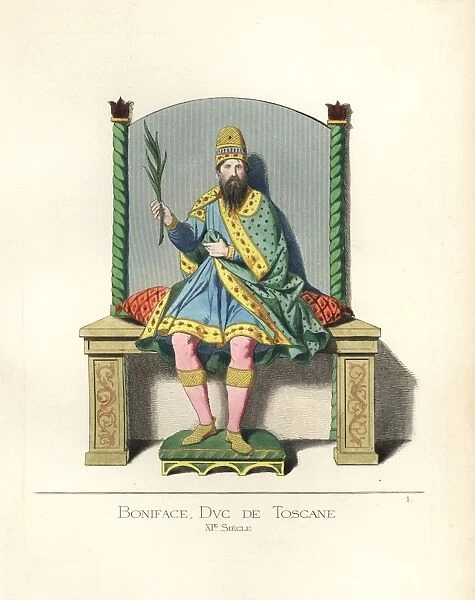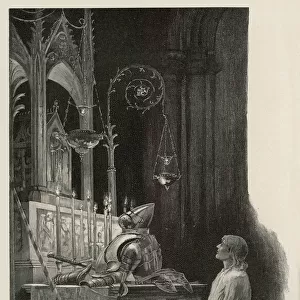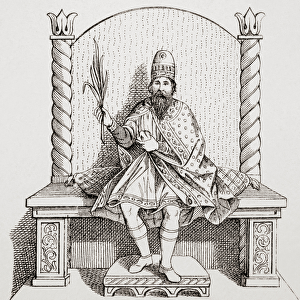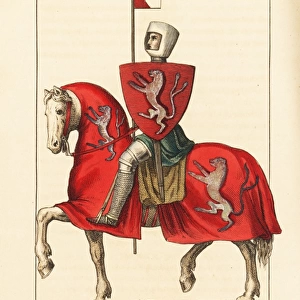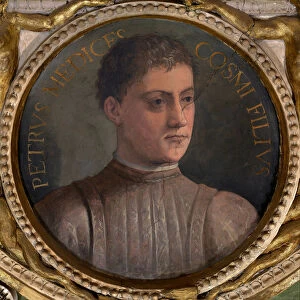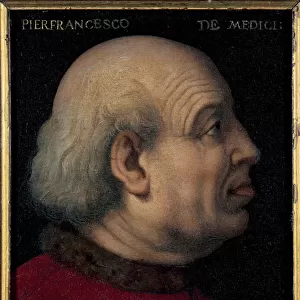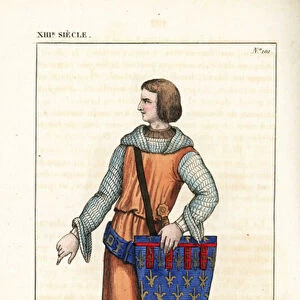Boniface III, Margrave of Tuscany (c1052)
![]()

Wall Art and Photo Gifts from Mary Evans Picture Library
Boniface III, Margrave of Tuscany (c1052)
Boniface III, Margrave of Tuscany (c.1052).. Handcolored illustration drawn and lithographed by Paul Mercuri with text by Camille Bonnard from Historical Costumes from the 12th to 15th Centuries, Levy Fils, Paris, 1860
Mary Evans Picture Library makes available wonderful images created for people to enjoy over the centuries
Media ID 14216657
© Florilegius / Mary Evans
Camillebonnard Chlamys Manuscript Paulmercuri Throne Tunic
EDITORS COMMENTS
In this exquisitely hand-colored illustration from the 19th century, we find ourselves transported back to the 11th century, in the company of Boniface III, Margrave of Tuscany. The Margrave, depicted here in regal attire, sits confidently on a throne adorned with intricate gold leaf and precious stones. His golden hat, a symbol of his rank, rests atop his head, its edges adorned with pearls and jewels. Boniface III wears a chlamys, a type of cloak that was popular during the Middle Ages, draped over his shoulders. Beneath it, he dons a richly embroidered tunic, its fabric shimmering with gold thread and vibrant colors. In his hands, he holds a manuscript, perhaps a document of importance or a religious text, signifying his learning and piety. To his left, we see the figures of Donizo and Vitamathildis, possibly his advisors or family members. Their attire, while not as extravagant as the Margrave's, is still indicative of the opulence of the time. The intricate details of their garments, from the delicate embroidery to the intricate patterns, are a testament to the skill and artistry of the period. This illustration, drawn and lithographed by Paul Mercuri with text by Camille Bonnard, is taken from the book "Historical Costumes from the 12th to 15th Centuries," published by Levy Fils in Paris in 1860. It offers a glimpse into the fashion and style of the Middle Ages, a time of grandeur and elegance, and serves as a reminder of the rich history and cultural heritage that continues to inspire us today.
MADE IN THE USA
Safe Shipping with 30 Day Money Back Guarantee
FREE PERSONALISATION*
We are proud to offer a range of customisation features including Personalised Captions, Color Filters and Picture Zoom Tools
SECURE PAYMENTS
We happily accept a wide range of payment options so you can pay for the things you need in the way that is most convenient for you
* Options may vary by product and licensing agreement. Zoomed Pictures can be adjusted in the Cart.

